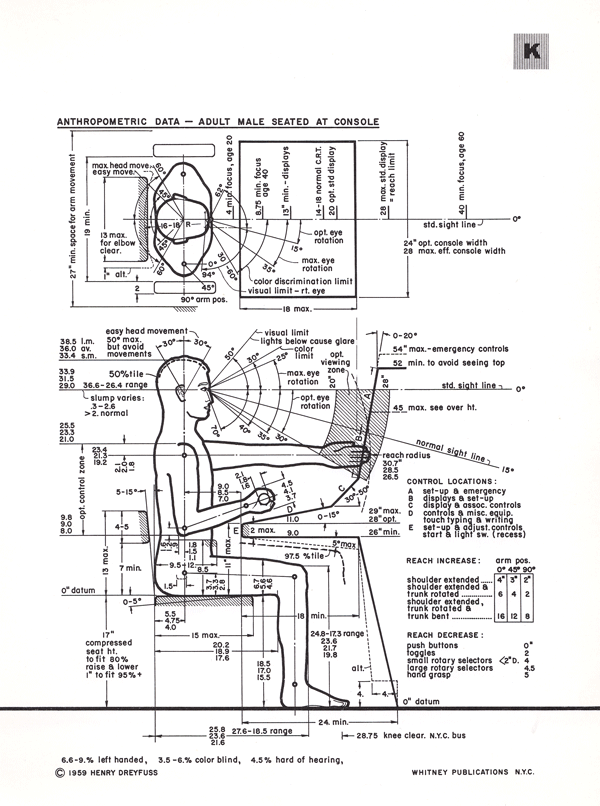
While researching for a current project, I came across a vintage folio on Human Factors in design by Henry Dreyfuss. The book contains a collection of charts and graphics developed to provide anthropometric data for the aid of the industrial designer in creating products.
A forward to the collection contains the following creed which provides a great lesson in how to determine the success of design.
“We bear in mind that the object being worked on is going to be ridden in, sat upon, looked at, talked into, activated, operated, or in some other way used by people.
When the point of contact between the product and the people becomes a point of friction, then the industrial designer has failed.
On the other hand, if people are made safe, more efficient, more comfortable—or just plain happier—by contact with the product, then the designer has succeeded.”
I also liked the fact that the aim of the book was actually about human factors, how people are. It seems that many books on the subject today are not about people, they are about how machines should be.
I appears that there is an updated version of the same text available with updated and additional charts.